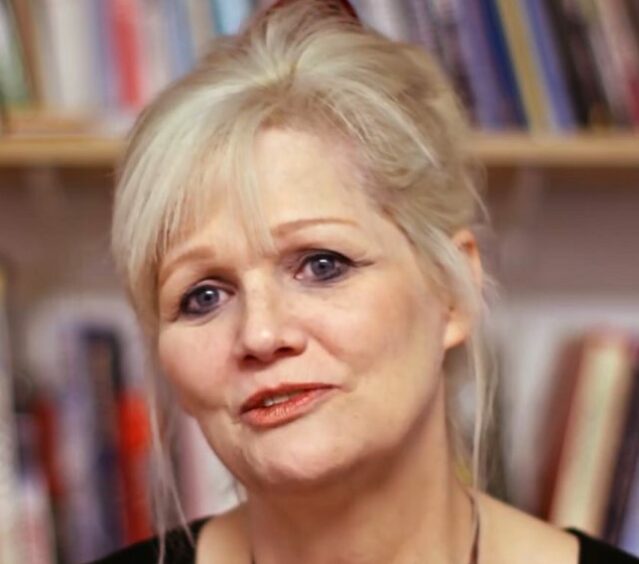
At least 30 women have been killed by partners or ex-partners in four years, police figures reveal, as experts warn the official toll is only the tip of the iceberg and the real number of victims may be four times higher.
Police Scotland’s figures obtained by The Post show 30 deaths between 2018 and 2022 blamed on domestic abusers. However, a leading expert on domestic abuse homicide, professor Jane Monckton-Smith, fears those figures are a dramatic underestimate.
She warned: “I believe the true figure will be up to four times higher. The deeply worrying fact is we are still only seeing the very tip of the iceberg reflected in official figures.
“We know through decades of experience of working in this field that the real number of hidden homicides and suicides caused by domestic abuse is more likely to be an estimated 120 rather than the 30 logged officially.
“I believe we are almost afraid to look too closely under the stone because the truly enormous scale of domestic abuse and violence against women is so huge, we fear that if we fully recognise it, we will then have to deal with it.”
The professor, a former police officer, believes Scotland is still lagging behind when it comes to logging figures and addressing suicides which are linked to domestic abuse.
She warns that, until lawmakers consider bringing in tougher preventative measures such as those found in France, where known domestic abusers face up to 10 years in jail if a victim takes their own life, the issue of hidden homicides will never be addressed. Monckton-Smith said: “I was recently discussing this issue with senior officers from Police Scotland who insisted they don’t have these kind of problems. I cannot accept that is the case.
“What is happening is police forces are failing to look much beyond the hour in which an incident occurs, so the domestic abuse element is not being logged and recognised for what it really is and its effect on victims.
“Suicides, where there is past evidence of domestic abuse should always be treated and investigated as a suspicious death. But this is still not happening everywhere, although some forces are now using my eight-step timeline in domestic abuse homicides to good effect.
“If France can bring in such effective new laws to get ahead of what is happening, then we must look at what more we can do here to catch up.
“We have only just seen a Coroner’s Court link suicide with domestic abuse, and the first manslaughter conviction for a woman who took her life as a result of his stalking and abuse. We need to see far more of these cases being recognised for what they are and dealt with.”
The Post has reported on a number of concerning cases in recent years where women have died after trying in vain to enlist the help of police and prosecutors and last year arranged for every MSP to receive a copy of Monckton-Smith’s landmark book on domestic violence, In Control.
The former police officer-turned-academic is also concerned that men who kill their partners are often portrayed as a “loving husband” who somehow snapped. She said: “We must call them out for what they are. Men who use domestic abuse to traumatise and kill women. And we must stop using their excuses to justify their dreadful killings and murders.”
Scottish Women’s Aid said: “We mourn for all of these women and for their families and friends who will never be the same because of the choices men have made to harm them.
“Looking at the news headlines we’ve seen in the past week alone, it can feel like this problem of men’s violence against women is completely unrelenting. It’s true that the struggle is a big one and that there is a huge amount of work to be done to ensure women can live freely and safely.
“However, the deaths of women are not inevitable. Domestic abuse is not inevitable. We have the power to change this picture. And, in Scotland, we believe we have the political and public will to see this change.”
The campaigners have supported moves to bring in the Domestic Homicide Review that has operated in England for several years. Work is under way on developing the system for Scotland.
Scottish Women’s Aid said: “When it comes to fatal violence, we have long called for a domestic abuse killings review model in Scotland that makes the deaths and murders of women and children visible, and we welcome that the Scottish Government is moving in this direction.
“We are keen to create a system that is prepared to learn lessons swiftly and that takes into account all deaths because of domestic abuse – including deaths by suicide and killings of children – and we are working hard on discussions about how we create a Scottish model that is robust and fit for purpose.”
Detective Superintendent Gillian Faulds, head of Police Scotland’s Domestic Abuse Taskforce, said: “Every domestic homicide is one too many. We review each one to help us understand whether there was anything we could have done to prevent these murders.
“We are also fully engaged with the domestic homicide taskforce, as we all work together to understand how we can better identify risk and vulnerability, and work proactively to reduce domestic abuse including domestic homicide.”
Legacy IT hampers inquiries

By Stephen Stewart, Home Affairs Editor
Police Scotland is relying on ageing IT systems from legacy forces to check how many women have been murdered by men after reporting their violence.
The force rejected a request for the information from The Post saying it could not easily gather the data as there are too many computer systems and databases to analyse.
The response to the request under Freedom of Information laws suggests the force is still depending on non-compatible systems – some dating from Scotland’s eight legacy forces that existed before April 2013.
Police Scotland was created by the merging of eight regional police forces as well as specialist services of the Scottish Police Services Authority including the Scottish Crime and Drug Enforcement Agency.
The force said dealing with our request would be too costly as they needed to check a large number of different sources.
These included eight legacy incident recording systems, the Police Scotland national incident recording system, the Interim Vulnerable Person’s Database and the Scottish Intelligence Database.
Conservative MSP Pam Gosal said: “This exposes why we need to do much more to protect victims of domestic abuse and take tougher action on this appalling crime. That is why I have brought forward plans for a Domestic Abuse Register to improve the way potential victims are notified about an individual’s past.”
Scottish Labour’s justice spokeswoman Pauline McNeill said: “Systems should be updated urgently so this data can be properly assessed.”
Police Scotland said: “Responding to this request would exceed the cost limit but officers have immediate access to all systems, including from legacy forces, to gather this data as part of their inquiries.”

Enjoy the convenience of having The Sunday Post delivered as a digital ePaper straight to your smartphone, tablet or computer.
Subscribe for only £5.49 a month and enjoy all the benefits of the printed paper as a digital replica.
Subscribe © Big Little Fish Television
© Big Little Fish Television